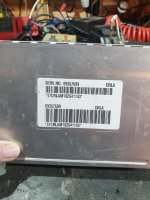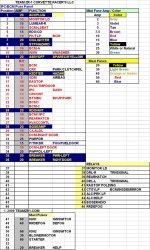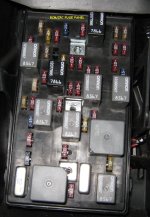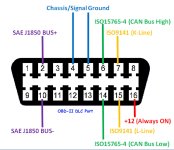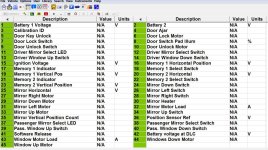Are you sure it is the BCM or some function of the C5 that plugs into the BCM ?
Many times it can be a stuck relay as they are small and over time degrades and the BCM is what controls them
Before yanking BCM move things around, or take a relay out and put back in to force a stuck relay to change states
There is a fuse panel above the BCM which has relays,
With BCM still connected you could pull relays in fuse box, make sure the male connectors of relay are clean,
Also check that the A/C did not leak water into the fuse box or wiring around it
Most of the relays are the same type so could swap them in location and see if the draw goes away
IF replacing the BCM
Before doing the swap, IF the radio has been set with an alarm code, either remove that or know what the code is as
replacing BCM the new one would not know what the code is and now your radio is LOCKED and would not function
I turned that code off in my 1999 C5 many years ago but if I recall if a code security code was set then there is a red LED that goes
on front of radio panel
Replacing BCM, more security, as to VATS
The BCM and PCM share a security code they must match or PCM will refuse to start engine
You will need to do a BCM to PCM relearn process to get new BCM to sync code with PCM
If you do not have that process I can post it
Last if replacing BCM, someone with a GMTech-II willl need to turn on or off what options your C5 has or doe not have
so reason I say be real clear if it is BCM or is it relays, etc
If testing
Diagnosing a parasitic draw can be a labor-consuming challenge.
The complaint is frequently that the engine won’t start after a couple of days of sitting because of a dead battery.
Often the battery has already been changed, but the problem remains the same: The engine won’t start after sitting for a few days and needs to be either charged or boosted.
Basics
Before we start a parasitic draw diagnostic, we need to ensure that the vehicle’s battery is fully charged and in a state of good health and that the charging system is functioning correctly. We need to verify that the correct battery is installed and that it will meet or exceed the vehicle’s reserve capacity (RC).
We need to verify that the customer’s driving habits aren’t to blame. Frequently driving short trips or a vehicle that sits for days or even weeks before being started can easily cause a battery charge to be depleted.
We also need to verify that all the customer’s plugged-in accessories are removed from any power ports or audio/video ports and that there aren’t any devices plugged into the diagnostic link connector (DLC). A good visual inspection and a customer debrief are important.
Once we have verified that nothing appears to have been left on or plugged in, the customer’s driving habits aren’t to blame, the charging system is fully functional, the correct battery is installed, and it has a proper state of charge, we can begin the process of checking and diagnosing a parasitic draw.
What is a parasitic draw?
A parasitic draw is when an electrical component continues to consume energy from the battery when it shouldn’t, even after it and the vehicle have been shut off. Some battery draws are acceptable and are required to retain memory, settings, security and other functions on the vehicle, but these are designed into the system and the proper battery will be able to maintain and deal with these.
What is an acceptable mA battery draw and how do we test for it?
General Motors suggests 40 mA as the maximum normal reading.
If you can’t find a published specification, there is a rule of thumb that we can use to determine a maximum mA value. It involves using the factory-recommended battery’s RC value and dividing it by four to come up with an mA battery draw value. If the RC of the factory battery was 140, then using the math: 140 divided by 4 equals 35. Using this formula, the rule of thumb value for this battery would be a maximum 35 mA draw.
There are two common methods used to detect a parasitic draw: disconnection and voltage drop.
The disconnection method involves the installation of a digital volt ohm meter (DVOM) set to the mA scale installed in series between the disconnected negative battery terminal and the negative battery cable end.
The excessive draw is then located by slowly removing one fuse at a time until the circuit that was causing the draw was identified. Using this method, though, can hide the issue because the interruption of power (battery disconnected) could cause the module, relay or device that is the cause of the excessive current draw to shut off, release or go to sleep. This could mask the issue until it acts up again.
The voltage drop parasitic draw detection method allows all the circuits, modules and communications networks to remain functional, powered and intact because the battery is not disconnected for this test.
A voltage drop is created by the internal resistance of a circuit when the current flows through it and the material that the fuse is made of causes some resistance and creates a small but detectable voltage drop when current flows through it. We can measure this voltage drop using a DVOM set to millivolt (mV) and use it to identify the circuit that might be the cause of our excessive current draw.
There are many different types, sizes and ratings of fuses being used on the modern vehicle, and there are charts that can be found online or in our information systems to display what the voltage drop across each type of fuse will translate to as an mA reading.
The modern-day parasitic draw testing procedure that I follow is a combination method. This procedure is a multi-phase blended approach that is effective at finding and identifying a parasitic draw on modern vehicles.
The Combination Method
Phase 1: Start with proper vehicle preparation and the use of an inductive amp clamp.
Step 1. Prepare the vehicle; perform the needed battery tests and verify that the issue is not caused by a customer driving pattern. Perform a full module scan and note any codes. Many European vehicles can set codes for parasitic draws. BMW offers a diagnostic “Energy Management test” that may identify the area of concern.
Remove the scanner and verify there are no aftermarket accessories connected to the auxiliary power ports, audio/video ports or the DLC.
Open your information system and note the location of all the fuse blocks on the vehicle being tested.
Step 2. Road test the vehicle and activate as many accessories and devices as possible from the infotainment systems, HVAC, power windows, etc. The idea is to operate as many components as possible, to verify the proper operation and to observe if anything doesn’t function as designed.
Step 3. Return to the shop after the road test and turn the ignition off, open all the doors, hood, liftgate and manually close all the latches and ajar switches. Using the key fob (if equipped), lock and set the vehicle’s alarm. Ensure the vehicle’s transmitter key fob is taken away from the vehicle so that the security system won’t detect it and possibly wake up the systems, or not allow them to fully power down.
Step 4. Attach an inductive amp clamp capable of reading down to 1 mA to the negative battery cable. Set the amp clamp to the mA scale and note the reading.
Step 5. Allow the vehicle to go to sleep. Most vehicles will start to go to sleep after about 10 minutes, with periodic wake-up cycles as the vehicle powers down. Falling fully asleep may take as long as two hours and will be different for each make and model. Typically, the vehicle will have less than a 75 mA draw during this falling asleep period.
Note: An engine-off natural vacuum evaporative test can occur during this time and cause a draw. Some vehicles may be equipped with an HVAC afterblow that may power the HVAC fan to blow for a specified length of time. These conditions are normal.
Step 6. After everything has gone to sleep, the expected mA draw displayed by the amp clamp should be less than the max mA draw that the manufacturer specifies or if no specification is available, less than the RC calculated value.
• If the value is less than the vehicle specification mA draw or the RC calculated mA draw, the issue isn’t present at this time or the issue is intermittent. You may have to reinitiate the test again to see if you can duplicate the problem.
• If the value is above the vehicle specification mA draw or the RC calculated mA draw, then we will need to continue testing using Phase 2.

